ISSN: 2319-9865
ISSN: 2319-9865
Visit for more related articles at Research & Reviews: Journal of Medical and Health Sciences
A forty six year old convict serving a life term was admitted with cough, fever and abdominal pain. Investigations revealed, he was immunocompromised with pulmonary tuberculosis and pleural effusion. Autopsy findings were pleural effusion, bilateral fibrocaseous and miliary tuberculosis with ascites. Microscopic examination of pieces of organs showed non reactive granulomas with presence of Acid fast bacilli on ZN staining.HIV epidemics are more severe in the southern half of the country and the far North East. The highest HIV prevalence rates are found in Maharashtra in the west, Andhra Pradesh, Tamil Nadu, and Karnataka in the south, and Manipur and Nagaland in the North East. With increasing incidence of pulmonary and extrapulmonary tuberculosis, physicians should remain suspicious of tuberculosis in patients of AIDS. The major underlying pathologies are either preventable or treatable conditions. There is an urgent need for attention towardsthe diagnosis, issue of therapy, and care of HIV disease in developing countries. Reducing mortality in patients with AIDS from infections must be highest public health policy in India. The case is being presented because autopsy in a known HIV positive patient was performed for the first time in our institute in Northern Karnataka and the pathological findings were of full blown AIDS with disseminated tuberculosis, which were comparable with others authors who have worked on autopsy in HIV/AIDS.
Keywords |
| HIV/AIDS, autopsy diagnosis, disseminated Tuberculosis |
Introduction |
| The AIDS associated pathology has not been well evaluated in a representative study hence very little is known about the spectrum of HIV/AIDS associated diseases in Indian subcontinent [1]. |
| AIDS is a retroviral disease caused by Human Immunodeficiency Virus (HIV). It is characterized by infection and depletion CD 4+ T-lymphocytes and by profound immunosuppression leading to opportunistic infections, secondary neoplasms and neurologic manifestations [2]. The HIV/AIDS includes both infectious and non-infectious diseases. Despite the use of prophylactic antibiotics over the years, of all the body organs, the lungs are most frequently affected by AIDS. Hence respiratory system failure is one of the leading causes of death in HIV/AIDS patients [3]. The prevalence of HIV/AIDS has been increasing every year and despite its rapid spread, very few reports on the pathology of AIDS have been published in India [3,4]. AIDS patients have a high prevalence of underlying pulmonary and hepatic abnormalities [4]. Extrapulmonary Tuberculosis in Lymphnodes, Spleen, Liverhave become common in AIDS than previously recognized along with involvement of Kidney, CNS, GIT, etc [3] |
| A person infected with HIV may die of an unrelated cause or may die as full blown case of AIDS. In those individuals where there is a clear cut evidence and proof of opportunistic infections finding a cause of death without performing an Autopsy will not be a problem. On the other hand there may be HIV positive individuals in whom an antemortem cause of death cannot be clearly established and the treating clinician may feel it prudent to ask for post mortem examination [5]. This is the first of its kind, in our institute, where an autopsy was performed in a known HIV/AIDS patient. |
Case report |
| A forty six year old male, serving a life term in jail, was admitted with complaints of fever, cough with expectoration, weight loss for three months and abdominal pain for two days. On examination he had tachycardia, fever of 1020 C. There was no edema or lymphadenopathy. General examination revealed evidence of reduced air entry on both sides with crepts. Abdominal examination revealed evidence of free fluid but there was no organomegaly. |
| The x-ray chest showed evidence of bilateral pleural effusion and USG abdomen revealed evidence of free fluid. Other abdominal organs appeared normal. |
| The laboratory investigations revealed anemia with leucopenia and neutrophilia. Sputum for AFB was POSITIVE. Immune status showed Immunodeficiency with antibodies for HIVI and II POSITIVE by three different methods. |
| The general condition of the patient deteriorated and he died on the sameday of admission to the hospital. |
| Being a death of a prison inmate, medicolegal postmortem was conducted on the next day after getting request from Principal Chief Magistrate. |
Autopsy findings |
| Height 180 cm, weight 50 kg, lean physique and emaciated body. |
| Body was cold with postmortem lividity present on the back and fixed, rigor mortis was well marked all over the body. There were no external injury marks anywhere. |
| Brain, meninges were congested, weighed 1250 gm, congested, no haemorrhages. |
| There was whitish coating of buccal mucosa and tongue. |
| Pleural cavity contained about 2 litre of yellowish thick turbid fluid.(Rt) lung was 900 gm and (Lt) lung 1000 gm weight. There were multiple adhesions between lungs and pleura. Three cavities in (Rt) lung and four cavities in (Lt) lung of variable sizes were seen. The cavities were filled with caseousmaterialand surrounded by fibrous wall. Pericardial sac and heart appeared normal. |
| Peritoneal cavity contained 1.5litre of yellowish thick turbid fluid. Stomach, small intestine, large intestine and mesenteric vessel appeared normal. Liver was 1.5 kg, Spleen 165 gm with whitish nodules of variable sizes on external surface. (Rt) Kidney was 300 gm and enlarged, (Lt) kidney was shrunken. Bladder, urethra, pelvic cavity and genital organs were normal. Spinal cord was not opened. |
| The immediate cause of death given by forensic experts was Pulmonary Tuberculosis with Abdominal Tuberculosis with Acquired Immunodeficiency Syndrome (AIDS). |
| Pieces of lungs, liver, spleen, (Lt) kidney, whole of brain and heart were sent for histopathological examination. Pleural and peritoneal fluid was not sent. |
Pathological Findings |
Gross examination |
| Pieces of lungs (Fig. 1), liver (Fig. 2), spleen (Fig. 3) and kidney (Fig. 4) showed rounded nodules of variable sizes, soft to firm, beneath the capsule and stroma. The nodules were multiple and large in spleen. Heart and brain did not reveal any gross abnormality. |
DISCUSSION |
Microscopic examination |
| Multiple serial sections from pieces of lungs, liver, spleen and kidney revealed destruction of tissue with nonreactive caseous necrosis with scant lymphocytic infiltrate (Fig. 5). Zeihl Neelsen stain demonstrated acid fast bacilli in lung, spleen, liver and kidney (Fig. 6). |
| Hence the final diagnosis given was Immunocompromised host with Disseminated tuberculosis in Lung, Liver, Spleen and Kidney. |
| The HIV epidemic in the Asian subcontinent has a significant impact on India. The spread of HIV in India is worrisome since India ishome to a population of over one billion [1]. Changes of tendencies in HIV transmission, incidence, prevalence and survival require reliable biological, clinical and paraclinical information in order to ensure an adequate management of this complex disease [6].The accurate diagnosis and early treatment of HIV/AIDS associated diseases still remainsa major hurdle in the management of HIV infected patients [3]. |
| Opportunistic infections were and continue to be a significant cause of death even in the active antiretroviral treatment era [6]. Lanjewar et al [3] and Amarapurkar et al [7] reported Tuberculosis (pulmonary + disseminated) as the commonest cause of death in AIDS patients, as was seen in our patient. Autopsy continues to be ameans of establishing the diagnosis of previously undetected cases or of confirming the diagnosis in those suspected during life [1]. Postmortem surveillanceof AIDS is vital for monitoring the course of HIV infection. On many occasions, causes of death established at autopsy, have been shown to differ from those suspected by clinicians [3,5,6]. Besides a reliable source for confirming or rulin gout diagnoses, autopsy provides valuable information about associated pathologies that may playan important role in clinical evolution. Missed diagnoses detected at autopsy may have important implications for research; epidemiological data and future management of HIV infected patients. Autopsy also helps monitoring the quality of care and determine the effectiveness of treatment for aparticular condition, thus more clinical-pathological correlations are needed in order to better understand and manage this disease and to sub sequently enhance clinical performance [6]. |
Acknowledgements |
| We express our gratitude to Dr. V.M. Mulay, Associate Professor, Dept. of Pathology, Govt. Medical College, Aurangabad (Maharashtra), for his motivation, encouragement and guidance. |
Figures at a glance |
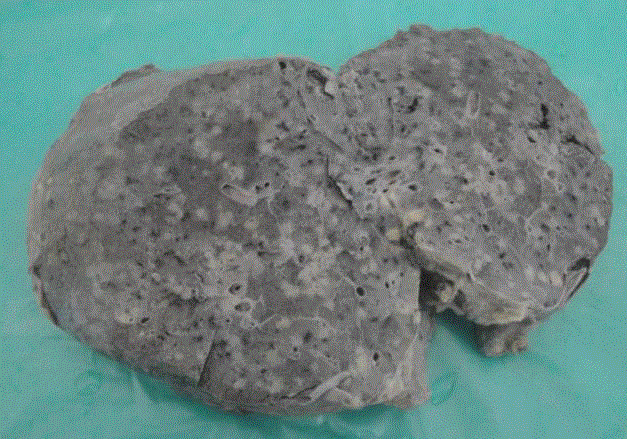 | 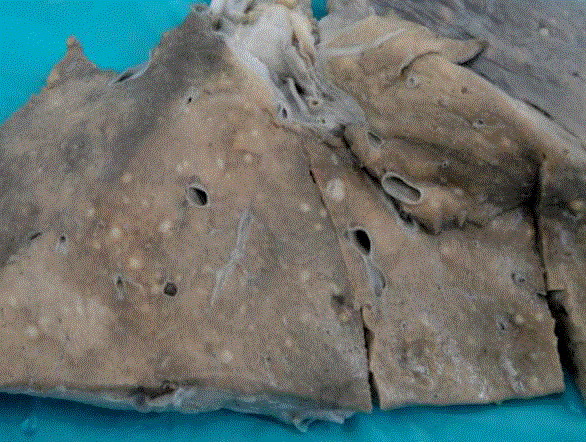 | 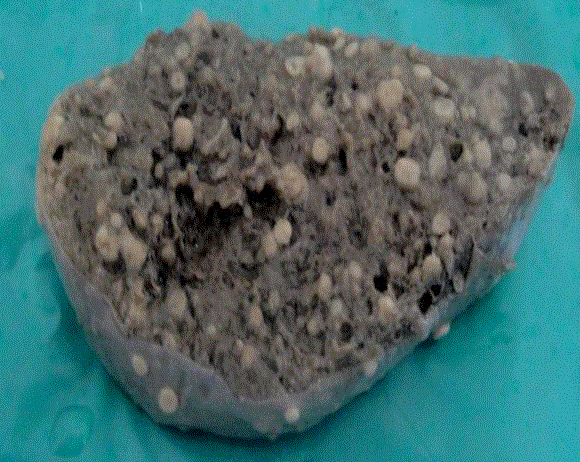 | 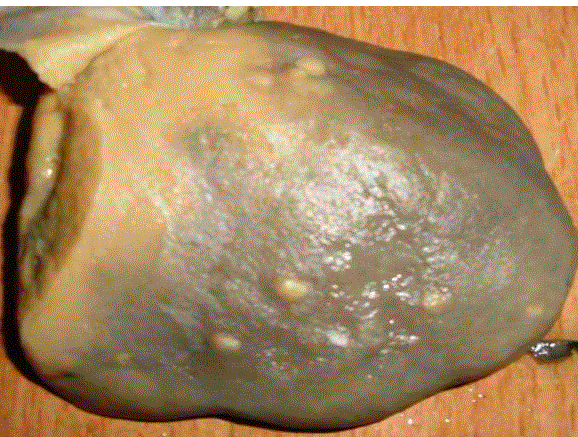 | 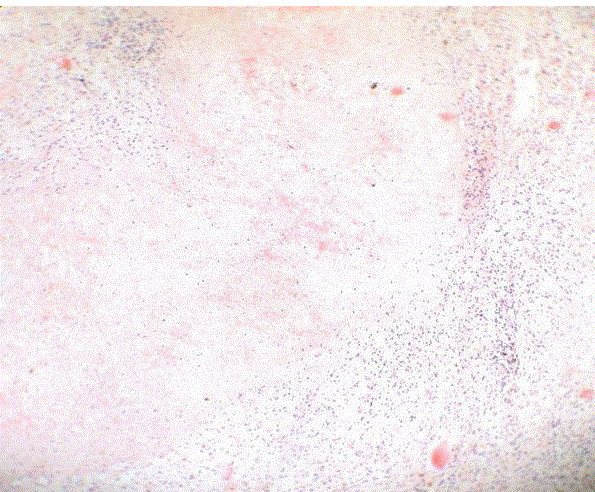 | 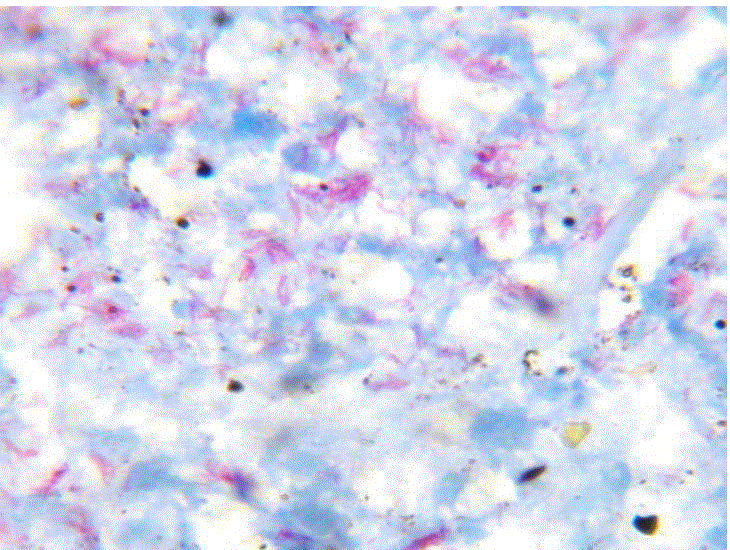 |
|||||
| Figure 1 | Figure 2 | Figure 3 | Figure 4 | Figure 5 | Figure 6 |